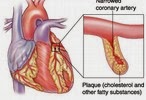Typhoid Fever (Salmonella typhi)

Typhoid Fever
Typhoid fever is the bacterial disease caused by the ingestion of food or water contaminated with bacterium, Salmonella typhi. The typhoid fever is also called typhoid. Typhoid fever is diagnosed by detection of Salmonella typhi in the stool sample. Typhoid responds to anti-biotic treatment. Approximately (3-5) % of the people becomes carrier after acute illness. Typhoid fever is gastric fever, abdominal typhus, infantile remittent fever, slow fever, nervous fever and pathogenic fever.
Introduction & Background
The term typhoid means “resembling typhus” but it is a quite different disease from typhus. Around 424-430, a devastating disease killed one third of the population of Athens. This plague or disease is thought to be typhoid fever. In 2006, the DNA study revealed the similarity between causative agent of ancient plague or disease and salmonella bacterium, responsible for typhoid fever.
This disease was shifted from Athens to Sparta and then other regions, killing millions of people. Till yet, typhoid fever continues to be a significant public-health issue in developing countries, especially for children. Pakistan, India, and Egypt are recognized as high risk areas for developing this disease. Worldwide, typhoid fever affects more than 13 million people annually, with over 500,000 patients dying of the disease.
Vaccines against typhoid fever are available but it’s only partially effective. Vaccines usually are reserved for those who may be exposed to the disease or are traveling to endemic areas where typhoid fever is common.
What Is Typhoid Fever?
Typhoid fever (typhoid) is the bacterial disease caused by the ingestion of food or water contaminated with bacterium, Salmonella typhi. The close contact with the infected person also transmits this disease. The signs and symptoms appear are high fever, headache, abdominal pain and either constipation or diarrhea, mostly dysentery. This disease responds to anti-biotic treatment (patient feels better in few days) but in some percentage of the patients may die of complications.
The infected person passed stools, which contain high percentage of bacteria. Contamination of water reservoirs with bacteria is then responsible for further transmission of disease.
Symptoms Of Typhoid Fever
The signs and symptoms of typhoid fever develop gradually in about one to three weeks, (although children may get typhoid suddenly). The general symptoms, the patient experiences are;
- Fever up to 104oF (40oC)
- Diarrhea or constipation
- Headache
- Generalized body pain
- Poor appetite
- Abdominal pain
As the disease progress, following symptoms appear in a step wise fashion;
1st Week Of Illness
Once signs and symptoms of typhoid start appearing, you may experience;
- Fever up to 104oC (starts as low fever and continue up to 103oF or 104oF)
- Diarrhea or constipation
- Headache
- Generalized body pain
- Weakness or fatigue
- Poor appetite
- Abdominal pain
- Dry cough
- Rash over chest and abdomen
2nd Week Of Illness
If typhoid let untreated, 2nd week of illness starts and you may experience;
- Continued high fever (on and off)
- Either diarrhea or severe constipation
- Severe weight loss
- Distended abdomen
3rd Week Of Illness
When typhoid enters 3rd week of illness, you may experience;
- Delirium
- Exhausted and motionless (termed typhoid due to such neuropsychiatric symptoms)
- Life threatening complications may occur
After 4th Week Of Illness
If patient survives till 4th week of illness, temperature decreases gradually until in a week or so, returns to normal baseline level. The signs and symptoms may appear even after fever has subsides for two weeks.
The signs and symptoms develop about one to three weeks after you’re exposed to the bacteria and continue for about four to six weeks.
When To See Your Doctor?
Typhoid fever need much concern even if you are generally healthy and find symptoms like fever up to 104oF, diarrhea or constipation, dry cough and body ache. Do visit your doctor if you suspect of typhoid fever.
How Is Typhoid Fever Diagnosed?
The diagnosis is made with the help of cultures from stool examination in the laboratory. Further blood tests are done to support investigations. Typhidot test and Widal test are the common blood test in routine practice to diagnose typhoid fever. Typhidot test detects anti-bodies against Salmonella typhi.
a) Blood or stool culture
b) Biochemical test like Typhidot test and Widal test
Causes/Source Of Infection
Typhoid fever is caused by Salmonella typhi, a virulent bacterium that mostly access through contaminated foods and water i-e through fecal-oral route.
Note: – Typhoid is also transmitted by close contact with the infected persons (typhoid carriers).
Risk Factors
Certain factors enhance chances of getting infection so you must avoid those factors.
- A travel to endemic area (where a lot of people are affected locally) of typhoid fever, renders you at high risk of getting exposed to the bacterium.
- Working at micro-biology labs dealing with Salmonella typhi.
- Having close contact with the person recently infected or chronic carrier of typhoid.
- Drinking water contaminated with Salmonella typhi.
- Week immune system due to medication or diseases such as AIDS.
Complications
Complications of typhoid fever are more likely to develop in third week of illness. The most common complication countered is intestinal bleeding or perforation (holes), about 5% of the people get experienced.
- Intestinal bleeding results into sudden drop in blood pressure and shock followed by appearance of blood in the stool.
- Intestinal perforation is characterized by leaking of intestinal contents into abdominal cavity with triggering signs and symptoms such as pain, nausea, vomiting and sepsis (blood stream infection). Such life threatening emergency requires immediate medical attention.
Some complication of minor frequency or less occurring ones are following;
- Myocarditis (inflammation of heart muscles)
- Endocarditis (inflammation of lining membrane of heart)
- Pancreatitis (inflammation of pancreas)
- Inflammation of gallbladder (cholecytstitis)
- Renal or urinary bladder infection
- Pneumonia
- Meningitis (inflammation of membrane surrounding brain and spinal cord)
- Psychiatric problems such as delirium, hallucination and paranoid problems
Treatment
Typhoid fever responds to anti-biotic treatment which is the most effect one aimed to kill Salmonella typhi.
Ampicillin (Omnipen, Polycillin, and Principen) and Trimethoprim-Sulfamethoxazole (Bactrim, Septra) has been used as anti-biotics in early times but the Salmonella typhi have become quite resistant to these drugs in some regions.
The commonly prescribed treatment currently falls into two categories;
- For non-pregnant patients Ciprofloxacin (Cipro) is recommended for non-pregnant adults.
- For pregnant patients Ceftriaxone (Rocephin, Oxidil, and Ptrox) is injectable antibiotics recommended for pregnant patients and children who can’t receive Cipro treatment.
Long term use of these anti-biotics may lead to development of anti-biotic resistant strain.
Anti-biotic Resistance
Once Chloramphenicol was the original drug of choice but because of rare serious side effects and wide spread bacterial resistance, chloramphenicol has been replaced by other effective antibiotics. Similar is the problem with the use of ampicillin and trimethoprim-sulfamethoxazole.
Supportive Treatment
Supportive treatment aims maintaining homeostasis i-e the internal environment of the body by reducing dehydration and refilling lost nutrients.
- Drinking fluids prevents dehydration caused by prolonged diarrhea. In severe cases, fluids are administered through venous routes (intravenously).
- Eating healthy diet helps your body in recovering essential nutrients lost during illness.
Preventions
Now the vaccine are available for typhoid but are not recommended for routine use. The people travelling to high risk area (endemic for typhoid fever) are treated with typhoid fever vaccine. Two forms of vaccine are available i-e an oral form and an injectable form.
- Oral vaccine is four capsules, with one capsule taken at every other day.
- Injectable vaccine is in single dose about two week before exposure (travelling to high risk areas).
Note: – Oral form is contraindicated for the people with compromised immune system.
Some measures should be done to prevent typhoid fever and limit its spread;
- Observe Hygiene. Wash your hands with soap or some kind of cleaner.
- Stay Home If You Are Sick. Especially if you are working at foods industry or some kind of health care services.
- Avoid food handling in case you are victim. So you may not be source of infection for others.
- Keep personal item separate.
Lifestyle Modification & Home Remedies
Diseases always need not cure with medication but with certain modifications in lifestyle and using natural cure or home remedies. Follow these guide lines to limit typhoid fever infection or its spread;
- Observe Hygiene. Wash your hands with soap frequently as it is the best way to control infection. Must wash hands before eating or preparing foods for others and after using the toilet.
- Avoid Drinking Untreated Water. In endemic areas, drinking contaminated water is the major source of infection of typhoid. For that reason, drink only the clean or mineral water.
- Prefer Hot Foods. Avoid foods that are served at room temperature. Instead prefer hot foods as hot foods carry little chances of infection.
- Avoid Raw Fruits And Vegetables. The raw fruits and vegetables may have been washed with unsafe water so may be the source of infection. Particularly avoid that vegetables that can’t be peeled like cauliflower, lettuce etc.
For downloading the article in PDFs format, click on the following button;
Featured Articles
Other Topics |

















Leave a Reply